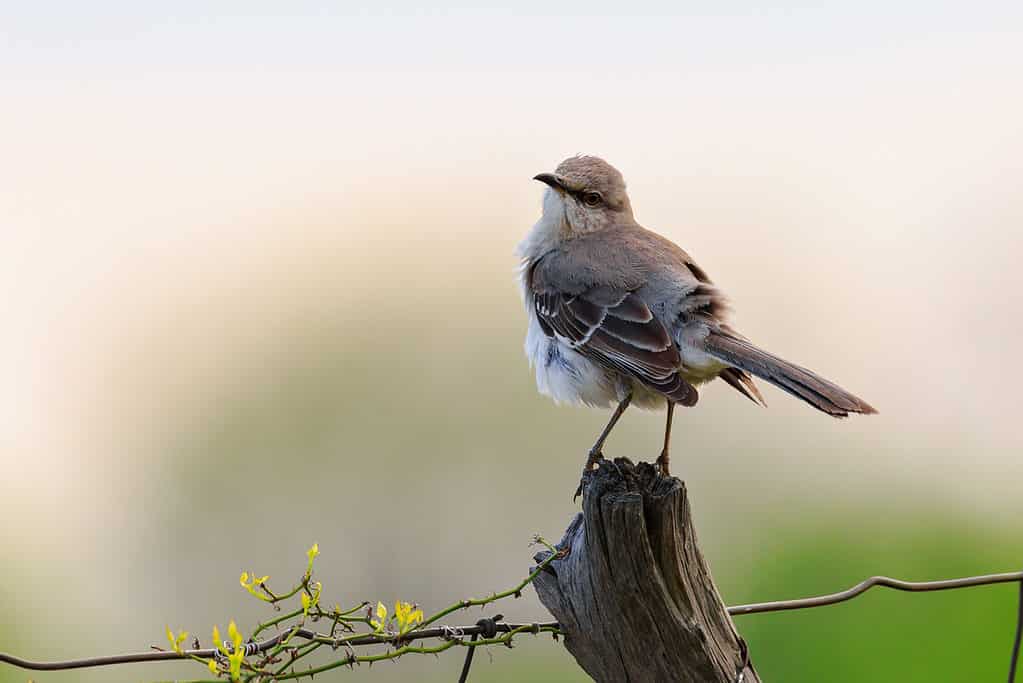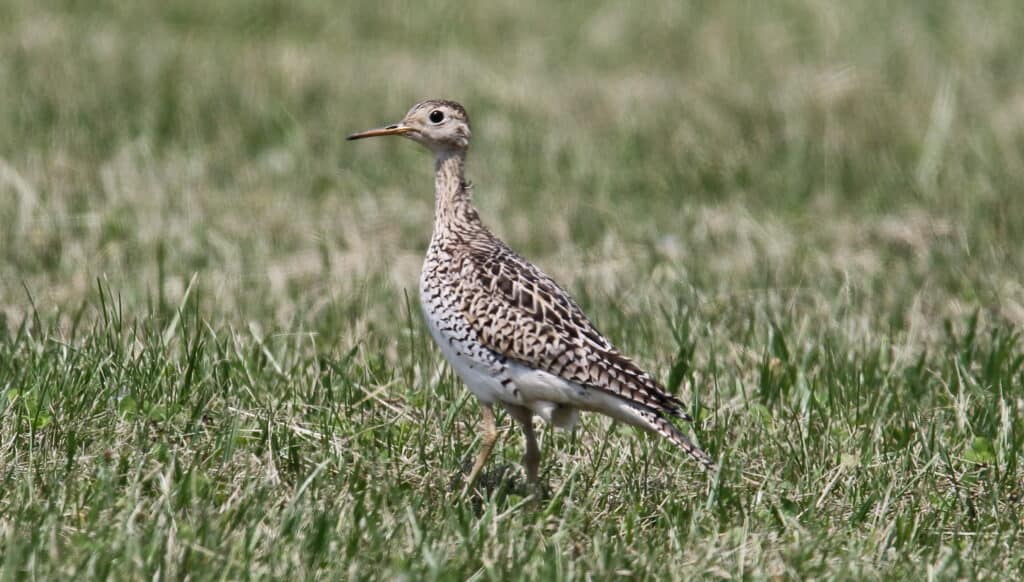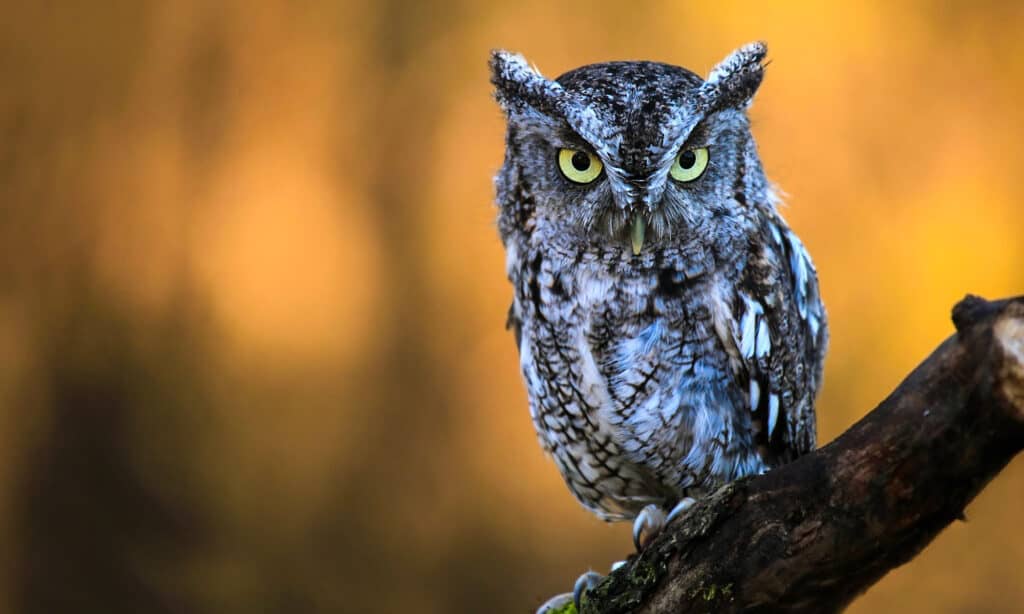Some birds are romantic, singing to one another when they’re mated. Others let out a mournful wail, which makes many think it’s a sign death is near. Although you may be used to the dawn songs of birds, there are some that wait until after dusk to sing. Discover five types of birds that sing and chirp at night!
When Do Birds Usually Sing?
If you live in an environment where birds are prevalent, you know what it’s like to wake up to their songs. Many birds choose dawn as the perfect time to belt out their music. If you’re not a morning bird like they are, these sounds may have you squeezing a pillow against your ears in frustration. But if you’re the type to rise with the sun, you understand how these lively chirps, trills, and extended melodies serve as celebratory tunes that a new day has arrived.
In many cases, the males take the mic because they’re looking for a mate. But birds sing at all times throughout the day, not just in the morning. You might be midway through your lunch hour when you tune into the sounds outside and realize birds are happily singing their hearts out. Although birds don’t sleep the way humans do, they do take time to rest. Not all types of birds sing and chirp at night, but there are a few that do. Let’s explore more below.
5 Types of Birds That Sing and Chirp at Night
1. Yellow-Breasted Chat
Scientific name: Icteria virens
The yellow-breasted chat nests and enjoys scrub habitats and feasts on insects and berries. These are foliage gleaners, mostly brown-colored birds that revel in dense thickets. In the spring, these birds bellow out a variety of sounds.

Yellow-breasted chats sing both in the morning and the evening.
©iStock.com/Warren_Price
Some are jazz-like, and others are short whistles. Some sound more like the bird is rejoicing with a chuckle and even a cackle. They don’t reserve their songs solely for the morning hours but also let the world know of their delight during the evening hours.
2. Common Loon
Scientific name: Gavia immer
Common loons go by different names, including the great northern loon and the great northern diver. If you can close your eyes and imagine the sound of wilderness, it’s often the wail of the common loon that comes through. Those unfamiliar with the sound may imagine a completely different type of animal and a chill of fear could run up their spine.

Great northern loon and baby chick loon swimming in a pond.
©Rejean Bedard/Shutterstock.com
But the common loon’s mournful song is amplified by water, making it that much more ominous. The wail isn’t the only sound they make. They also yodel and tremolo. They may be heard during the day, but they are much more active with their vocalizations after dusk.
3. Northern Mockingbird
Scientific name: Mimus polyglottos
The northern mockingbird is a common bird throughout North America. These birds are sharp and can even mimic other sounds they hear. It might be the song of another type of bird or if they’re in dense, developed environments, they might even mimic the sound of a car alarm. Though sometimes they grace urban areas, they are also found in suburban environments.

A northern mockingbird can learn hundreds of distinct songs.
©iStock.com/cmcneill17
They like to enjoy open areas like farmlands and desert brush. Its nickname is the “American Nightingale,” and it’s known for mimicking many tongues. It can learn hundreds of distinct songs and though you can usually hear these birds during the day, every so often, they grace the night with their symphonies.
4. Upland Sandpiper
Scientific name: Bartramia longicauda
You can find the upland sandpiper in grasslands, foraging on the ground, looking for its food source: insects. This shorebird nests in the ground and though usually shorebirds enjoy wetlands, that’s not the case for the upland sandpiper.

Upland sandpipers make jerky movements as they walk through the grass, searching for food.
©2,718 × 1,546 pixels, file size: 2.81 MB, MIME type: image/jpeg – License
Its steps are a bit erratic, as are the fast jabs it takes when it spots prey. The males love belting their songs out at night and sometimes the females join in. Their songs are rather somber and start with a higher pitch that trills and then comes down to a low tone.
5. Eastern Screech Owl
Scientific name: Megascops asio
The eastern screech owl prefers forest habitats and nests in cavities, like tree hollows. They take focused aerial dives when they spot prey, which includes small mammals of different kinds. Their trill is peculiar and if you happen to hear it, it’s sure to capture your attention.

Eastern screech owls nest in tree hollows.
©mlorenz/Shutterstock.com
Although it may instill a bit of fear, once you realize where it’s coming from, you know there’s nothing to worry about. These birds camouflage impressively, calling trees their homes. They may even venture into nest boxes! When these birds find their mate, they often sing to one another — and to them, it doesn’t matter whether it’s day or night.
The photo featured at the top of this post is © iStock.com/BrianLasenby
Thank you for reading! Have some feedback for us? Contact the AZ Animals editorial team.






